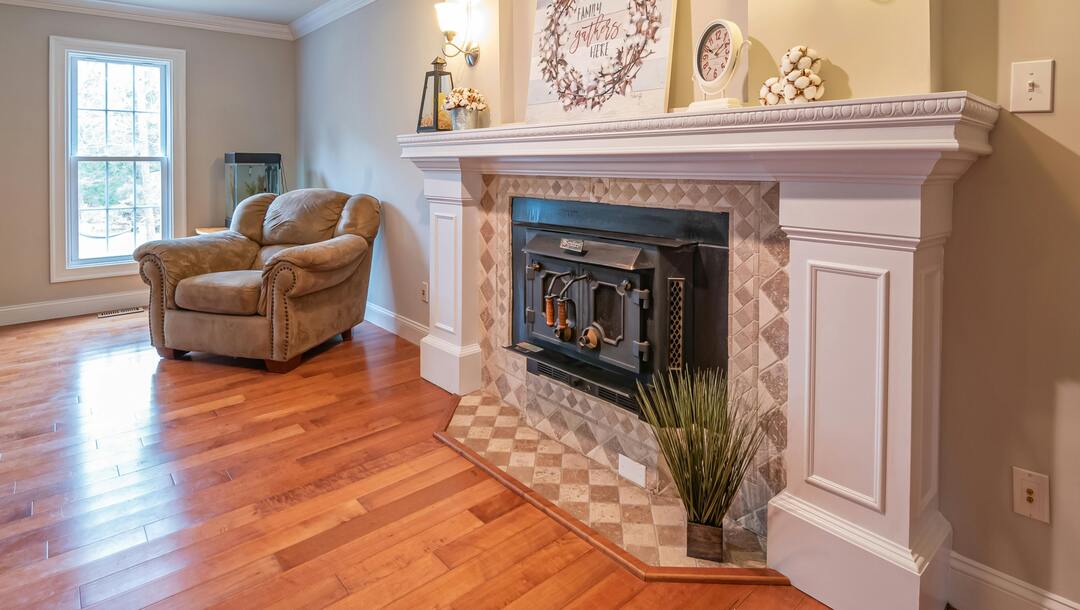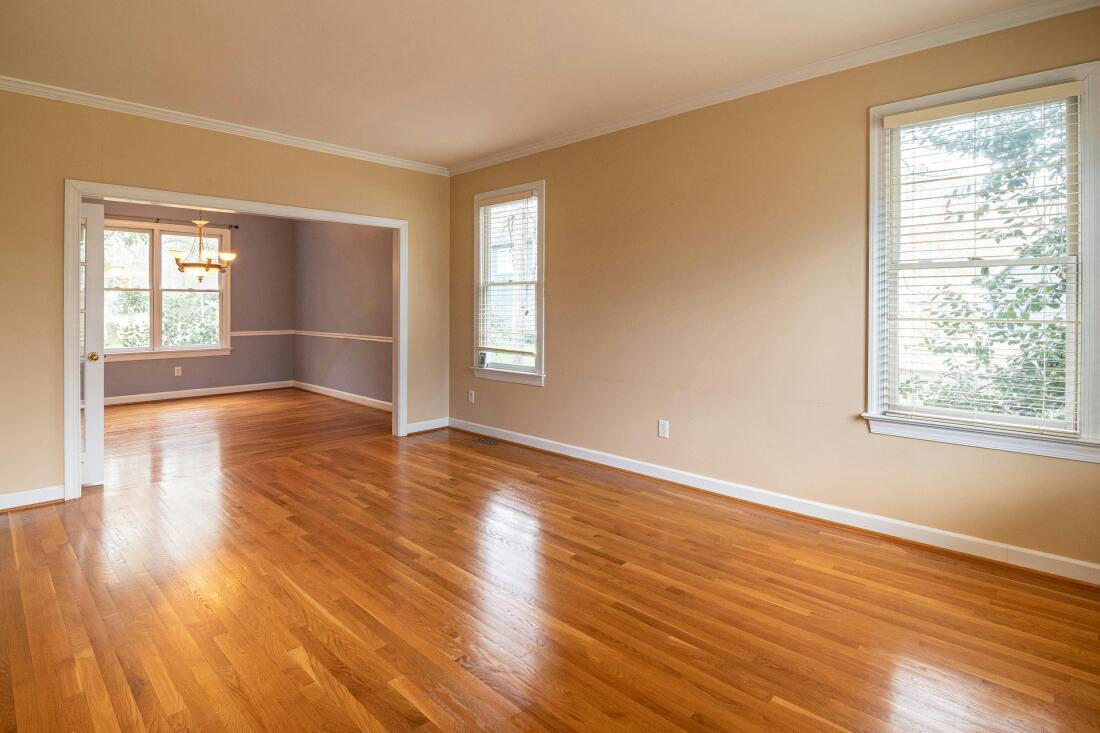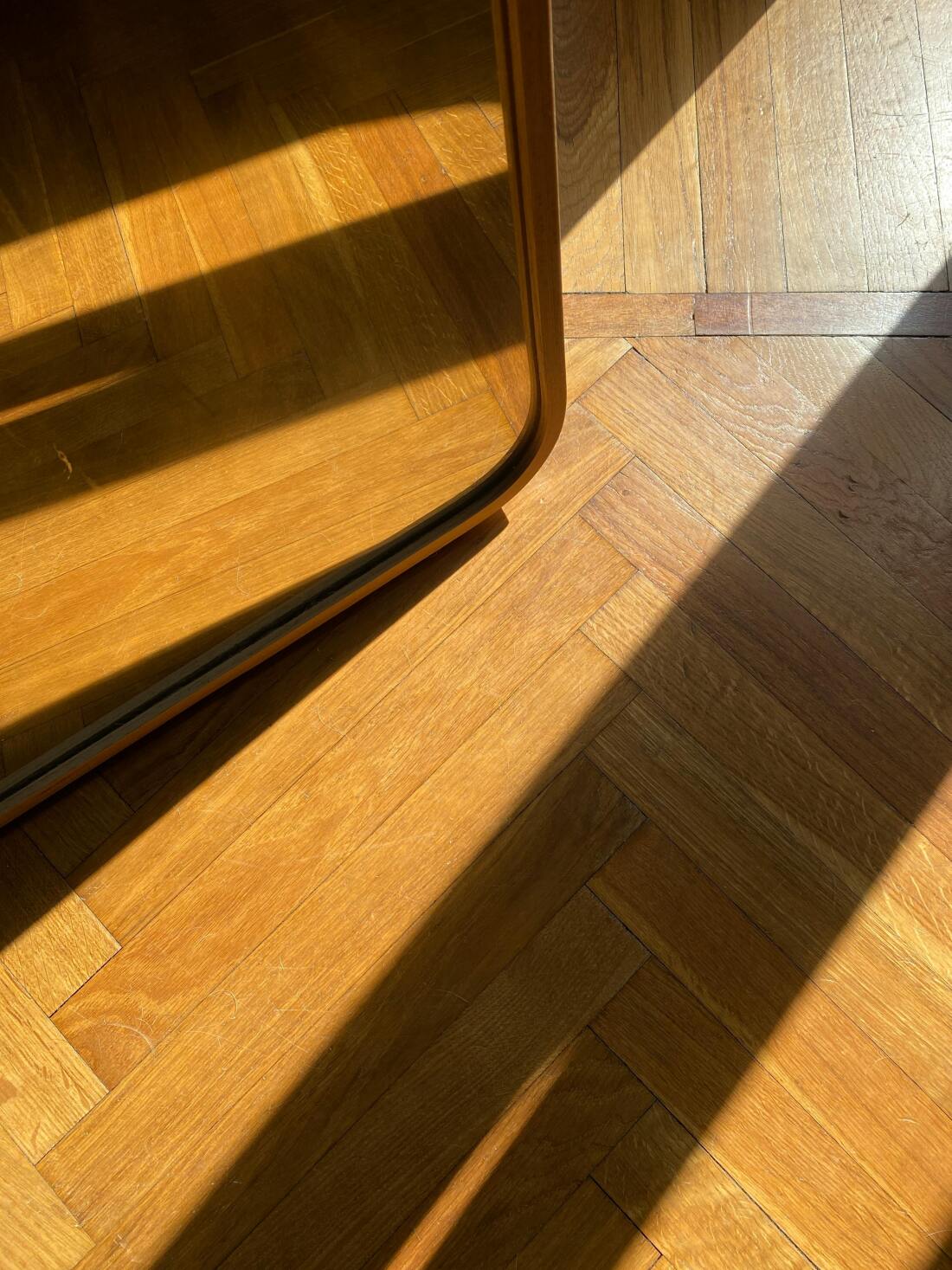
Should you install recycled hardwood flooring in your home?
February 23, 2024Step into a world where history meets modern elegance. Recycled hardwood flooring isn't just about aesthetics; it's a conscious choice for a sustainable future. Imagine the warmth of reclaimed wood, imbued with whispers of the past, adorning your floors in a stunning herringbone pattern.
Explanation of recycled hardwood flooring
Recycled hardwood flooring is created by salvaging wood from various sources, such as old buildings, barns, and industrial facilities. The salvaged wood is cleaned, de-nailed, and processed to create high-quality laminate flooring. This eco-friendly process helps reduce waste and minimizes the need for new lumber, contributing to environmental preservation.
The benefits of recycled hardwood flooring include its unique and rustic appearance, durability, and the appeal of knowing that the wood has a history and has been given a new life. It is available in various styles, colors, and sizes, allowing for customization to suit different design aesthetics and preferences.
Unlike reclaimed hardwood flooring, which refers to wood that has been repurposed from its original flooring installation, recycled hardwood is sourced from various places and repurposed for use as strip flooring. This gives recycled hardwood flooring a broader range of sources and allows for a more diverse mix of woods in each piece.
Overall, recycled hardwood flooring is a sustainable and responsible choice for environmentally conscious individuals and businesses, offering both aesthetic appeal and a positive environmental impact.
Importance of sustainability in home renovations
Incorporating reclaimed wood and other sustainable materials in home renovations is vital for reducing the impact on the environment. By using reclaimed wood, we are contributing to the reduction of deforestation, as well as decreasing the amount of waste that ends up in landfills. This not only helps preserve precious natural resources but also promotes recycling and the responsible use of materials.
Moreover, sustainable materials like reclaimed wood also aid in decreasing the carbon footprint associated with home renovations. Instead of relying on newly sourced materials that require energy-intensive production processes, using reclaimed wood helps to lower the overall environmental impact.
Additionally, implementing sustainable practices in renovations offers long-term benefits for both the environment and homeowners. It can lead to improved indoor air quality, lower energy consumption, and reduced maintenance costs. By choosing sustainable materials, homeowners can also create a healthier living space for their families while contributing to the preservation of natural habitats and ecosystems.
Overall, prioritizing sustainability in home renovations is crucial for mitigating environmental impact and promoting a more eco-friendly way of living. It is an investment in the future of our planet and the well-being of future generations.
Benefits of Recycled Hardwood Flooring
Recycled hardwood flooring offers numerous benefits to homeowners, builders, and the environment. The following headings will outline the advantages of choosing recycled hardwood flooring, including its eco-friendly properties, durability, unique aesthetic appeal, and potential cost savings. Whether you are renovating a home or constructing a new one, recycled hardwood flooring provides a sustainable and attractive option that makes a positive impact on both the planet and your living space.
Environmental impact
Using reclaimed wood in flooring has a significant positive environmental impact. This includes reducing the demand for newly harvested virgin wood, which helps in the conservation of forests and reduces deforestation. By repurposing wood that has already been harvested, the process also minimizes waste and the need for energy-intensive, high quality products from new materials, thus lowering its overall carbon footprint.
The process of reclaiming original wood promotes environmental sustainability and responsibility by giving old wood a new life and purpose, diverting it from landfill disposal, and reducing the need for new resources. This contributes to a healthier planet by minimizing the impact on the environment and helping to address issues related to climate change.
Additionally, using reclaimed wooden floors contributes to a healthier planet by reducing the demand for new timber, cutting down on deforestation, and preserving natural habitats. This ultimately results in a smaller carbon footprint and a more sustainable approach to construction and design.
Overall, the use of reclaimed wood floors makes a positive impact on the environment by reducing deforestation, waste, and carbon emissions, as well as promoting sustainability and responsible resource management.
Reducing carbon footprint
Using reclaimed wood for hardwood floors is an effective way to reduce the carbon footprint associated with traditional solid wood flooring. By utilizing reclaimed wood, the demand for new lumber is decreased, which in turn reduces the need for deforestation and the accompanying environmental impact.
Additionally, using reclaimed wood promotes recycling and reduces the amount of waste that would otherwise end up in landfills. This not only lessens the overall environmental impact but also helps to conserve natural resources. Furthermore, the energy used in processing new wood is significantly reduced when reclaimed wood is used, further decreasing the carbon footprint.
The environmental benefits of using reclaimed wood also include less deforestation, as well as a reduction in overall waste and environmental impact. By repurposing old wood, the need to cut down new trees is minimized, leading to a more sustainable and eco-friendly choice for hardwood flooring.
In addition to its environmental benefits, reclaimed wood adds a real sense of history and authenticity to the environment. Each piece of reclaimed wood has a unique story and character, which adds value and a deeper connection to the space in which it is used.
In summary, using reclaimed wood for hardwood floors not only reduces the carbon footprint but also promotes recycling, decreases deforestation, minimizes waste, and adds historical value to the environment.
Preserving natural resources
Preserving natural resources is essential for the health and well-being of our planet and future generations. These resources include air, water, soil, minerals, wildlife, and many more. It is crucial for us to take measures to protect and conserve these resources in order to maintain a sustainable and balanced ecosystem. In the following headings, we will explore various ways in which we can actively contribute to the preservation of natural resources and the importance of doing so for the overall health of our planet. This includes reducing waste, conserving water damage, practicing sustainable agriculture, and promoting biodiversity. By understanding the importance of preserving natural resources and taking action, we can help ensure a healthier and more sustainable future for our planet.
Quality and durability
Recycled timber flooring offers exceptional quality and durability compared to softwood and newly grown hardwood species. The denser and harder wood obtained from old growth trees contributes to its hard-wearing nature and longevity. For example, reclaimed oak or chestnut timber is known for its durability and ability to withstand heavy foot traffic and wear and tear.
Proper care during installation can further enhance the durability of recycled wood flooring. This includes ensuring a level subfloor, using quality adhesives or fasteners, and allowing for expansion and contraction. These measures can prevent warping, buckling, or other issues that may compromise the longevity of the flooring.
Key factors that contribute to the quality and durability of recycled timber flooring include the source of premium materials and skilled workmanship. By selecting high-quality reclaimed wood from reputable suppliers and having it installed by experienced professionals, the flooring can maintain its durability and high performance over time. In conclusion, recycled timber flooring offers exceptional durability and longevity, especially when sourced from high-quality materials and installed with care by skilled professionals.

Comparable to new hardwood flooring
There are numerous benefits to having solid wood flooring that make them comparable to new flooring options. First and foremost, hardwood floors are incredibly durable and can last for decades with proper care, making them a long-term investment for homeowners. Additionally, hardwood floors can significantly increase the property value of a home, providing a high return on investment.
The easy maintenance of hardwood floors is also a major advantage, as they are simple to clean and maintain compared to other flooring options. Replacing old, worn-out flooring with new hardwood floors can completely change the overall style of a home, giving it a fresh and modern look. This upgrade can attract potential buyers and increase the appeal of the home on the real estate market.
In conclusion, hardwood floors offer durability, increased property value, and easy maintenance, making them a comparable option to new flooring. The potential style change and increased appeal to buyers make hardwood floors a desirable choice for homeowners looking to upgrade their flooring.
Adds character with aged patina
When it comes to home decor and design, adding character with an aged patina is a timeless and classic way to infuse a space with a sense of history and depth. Whether it's through vintage furniture, distressed wood finishes, or antique brass accents, incorporating elements with a weathered and time-worn look can instantly bring warmth and charm to any interior. This style evokes a sense of nostalgia and authenticity, making it a popular choice for those looking to create a cozy, lived-in atmosphere in their homes. From rustic farmhouse to industrial chic, adding character with aged patina is a versatile design approach that can be tailored to suit a broad range of aesthetics and tastes. Whether it's through carefully curated vintage finds or intentional distressing techniques, embracing the beauty of aged patina can transform a space and give it a unique and elegant personality.
Cost-effectiveness
When considering the cost effectiveness of restoring versus replacing hardwood floors, it's important to evaluate your budget and long-term investment goals.
Restoring hardwood floors can be a more cost-effective option upfront, as it typically involves sanding, refinishing, and minor repairs, which can be significantly less expensive than a full replacement. Additionally, restoring hardwood floors can often be completed in a shorter timeframe than replacing them, which can save on labor costs.
In terms of long-term maintenance, restored hardwood floors may require more frequent refinishing than new floors, but the overall cost is still likely to be lower than the expense of a complete replacement.
When it comes to property value, having well-maintained hardwood floors can significantly increase the appeal and value of a home. Restoring hardwood floors can provide a fresh, updated look that may attract potential buyers and result in a higher selling price.
Ultimately, the cost effectiveness of restoring versus replacing hardwood floors will depend on your budget and long-term investment goals. If you're looking to save money upfront and potentially increase the value of your property, restoring hardwood floors may be a more cost-effective option.
Cheaper options compared to brand new hardwood flooring
Cheaper options compared to brand new hardwood flooring include engineered wood and reclaimed wood. Engineered wood is a cost-effective alternative as it is made from a layered construction of real wood veneer on top of a plywood base. It offers similar aesthetic appeal to hardwood, is more affordable, and is generally more durable and resistant to moisture and temperature changes. However, it may not be as long-lasting as solid hardwood and can only be refinished a limited number of times.
Reclaimed wood, on the other hand, is sourced from old buildings, barns, and other structures. It is an environmentally-friendly option and can provide a unique, rustic look to the flooring. While it may require more maintenance and have a higher initial cost for sourcing and installation, it offers a one-of-a-kind aesthetic at a more affordable price point compared to brand new hardwood.
Both engineered and reclaimed wood can provide a similar aesthetic to traditional hardwood flooring at a fraction of the cost, making them a popular choice for homeowners looking for more budget-friendly options without sacrificing the look and feel of hardwood.
Wide range of styles and finishes are available
Wood flooring offers a wide range of styles and finishes that cater to different tastes and preferences. From traditional to modern, there are various options available to suit every design aesthetic. When it comes to finishes, wood flooring can be painted, oiled, or varnished, each offering unique benefits.
Painting wood flooring allows for endless color options and can add a bold statement to any space. Oiling brings out the natural beauty of the wood and enhances its durability, providing a more organic and earthy look. Varnishing, on the other hand, offers a protective layer that helps minimize wear and tear while also adding a glossy or matte finish, depending on the desired look.
Reclaimed wood flooring brings a unique and rustic charm to any space, with color options ranging from deep browns to weathered grays. Signature styles like barn wood or pallet wood offer distinct characteristics that add a sense of history and character to a room. Each variety of reclaimed wood flooring comes with its own unique features, such as original nail marks or natural patina, adding to the overall charm and appeal.
Overall, the different finishes of varnish and oil have their individual benefits, with varnish offering protection and a glossy finish, and oil providing a natural and durable look. Whether it's traditional or reclaimed wood flooring, there are plenty of style and finish options to choose from to achieve the desired look in any space.

Types of Recycled Hardwood Flooring
When considering hardwood flooring, choosing a sustainable option like recycled hardwood can be both environmentally friendly and aesthetically pleasing. There are various types of recycled hardwood flooring available, each with its own unique characteristics and benefits. From reclaimed wood to salvaged timber, these types of recycled hardwood flooring offer a sustainable and eco-friendly option for your flooring needs. Whether you are looking for a rustic, vintage look or a more modern and sleek finish, there is a type of recycled hardwood flooring that can meet your design preferences and sustainability goals.
Douglas Fir
Douglas Fir is known for its stunning vertical dense grain aesthetic, bright, energetic tones, and outstanding strength for its weight. These characteristics make it a popular choice for a wide range of uses, including construction, furniture, and woodworking flooring projects. Its natural beauty and durability make it a preferred option for flooring, paneling, and other interior and exterior finished products.
Using reclaimed Douglas Fir pieces of lumber for flooring offers several benefits. Not only does it provide unique and historical significance, but it also contributes to sustainable building practices. The aged and weathered patina of reclaimed Douglas Fir adds character and charm to any space, while its warm tones and natural variations complement a wide variety of design styles, from rustic and traditional to contemporary and modern. Additionally, the strength and durability of reclaimed Douglas Fir make it an excellent choice for high-traffic areas, ensuring a long-lasting and resilient flooring option. Overall, reclaimed Douglas Fir lumber offers a beautiful and sustainable choice for flooring that adds warmth and character to any space.
Popular choice for reclaimed wood flooring
Some popular types of reclaimed wood flooring include parquet blocks and boards from different eras, such as Victorian, Georgian, and Edwardian. Parquet blocks are a popular choice for reclaimed wood flooring and are often seen in hallways, living rooms, and dining rooms due to their intricate and timeless patterns. They add a sense of traditional charm and elegance to these spaces. Reclaimed heart pine boards from various eras are also a popular choice for bedrooms, kitchens, and offices, offering a more rustic and cozy feel.
Customization options for the reclaimed hardwood original flooring range are plentiful. From choosing the type of wood and its finish to the layout and grain pattern of the floor, there are numerous ways to create a unique and personalized touch. Clients can opt for varying lengths and board widths, different surface textures, and even the option to include reclaimed features such as nail marks, holes, saw marks, and knots. This customization allows for a truly one-of-a-kind floor that adds character and warmth to any room. The reclaimed wood flooring range is not only a sustainable choice, but it also brings a timeless and unique aesthetic to any home.
Embrace Sustainable Style: Discover Herringbone Magic with Recycled Wood!
Transform your home today & get a free quote for recycled hardwood flooring. Experience the Herringbone Difference with Recycled Wood.
- Visit our websitetoday!
- Click here and discover your perfect floor today!





